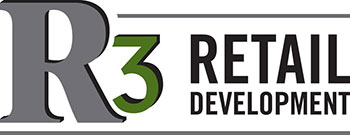It’s difficult at times to distinguish between what’s fact and fiction with all the noise going on in energy management. Let R3 Retail Development help you make the smart decision.
Myth: Energy Management Systems are only for large facilities
Reality: EMS systems are designed based on the client’s need, whether you own a single facility of 5000 square feet or a chain of multi-story facilities. There are many different building control platforms available, the trick is to know and understand which one is right for your organization. Every Building Automation System is not right for every client. Selecting the right team to guide you in selecting the platform best suited for your facility and needs is integral to maximizing your return on investment.
Myth: Energy Management Systems are too complicated.
Reality: Most Energy Management Systems include a graphics-based user interface allowing users to quickly make set point adjustments or schedule changes, receive data on system operations and identifying equipment issues before they become costly equipment failures.
Myth: Energy Management System is just another name for Building Automation Systems.
Reality: This myth is both true and False. Energy Management Systems differ from Building Automation Systems because they employ and control energy saving strategies. Energy Management Systems are like Building Automation Systems because you can choose to automate many daily functions, for example your lighting schedule and your HVAC setpoints.
Myth: Energy Management Systems are not needed if you just apply common sense, everyone knows to turn the lights off.
Reality: Controlling lighting and HVAC through your EMS means that you are no longer leaving it up to your employees on how and when to conserve energy. One employee may want the building cooler, another thinks it too cold. One employee my want every light in the building on – even though he / she is only working in one confined area. Energy Management Systems allow you to make strategic energy saving decisions and take control of your energy spend out of your employees’ hands.
Myth: Energy Management Systems require all new equipment to be effective.
Reality: In most cases, your energy management system can be designed to work with your existing equipment providing you with preventative maintenance data, energy saving opportunities and more control over your energy spend. Retrofit projects vary greatly, in order to ensure success of your project retrofit it is important to partner with an EMS service company with a proven retrofit track record.
Myth: After the Energy Management System is installed you are on your own with how it works.
Reality: Energy Program Management services are available to train your team, manage your schedule or other changes, as well as provide ongoing technical support to your facility service providers. R3 Retail Development Energy program management includes support for troubleshooting equipment maintenance issues, analysis of data trends accompanied by suggested solutions to increase your energy savings, maintain your equipment useful life, increase efficiency through proactive maintenance and increasing conservation through human element insights.
Myth: There is not enough savings on my energy bill to warrant a full energy management system.
Reality: Department of Energy Efficiency and Renewable Energy states that on average commercial properties that employ building control systems can save an average of 29% on their annual energy consumption, with some industries such as secondary schools and retail stores saving over 40%.
Written by Suzanne Ferguson
